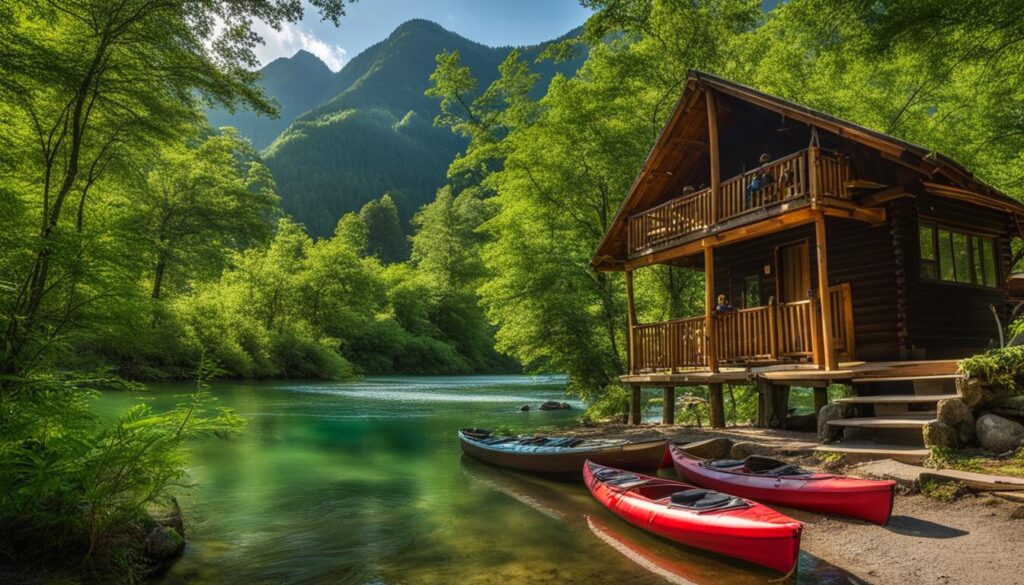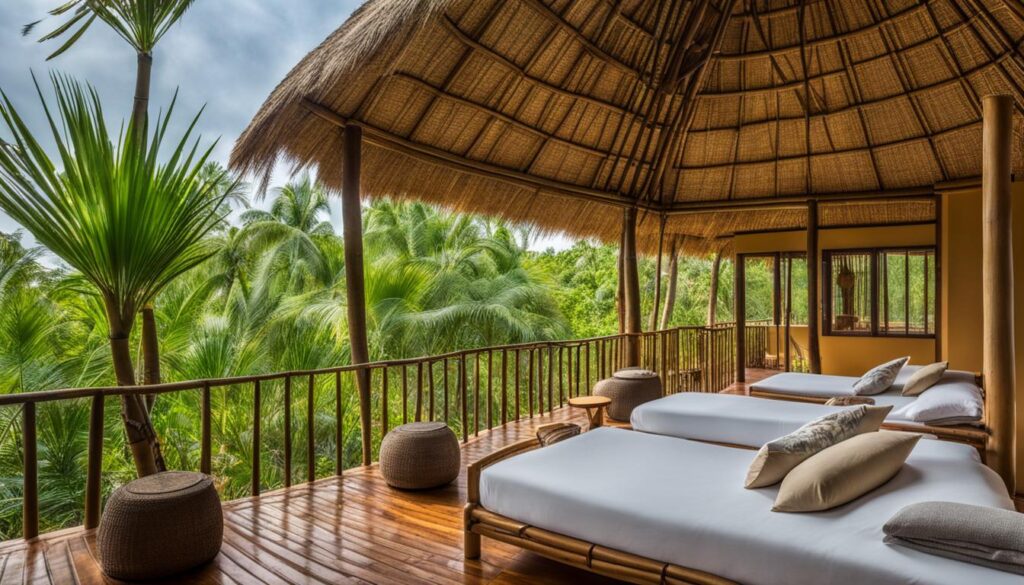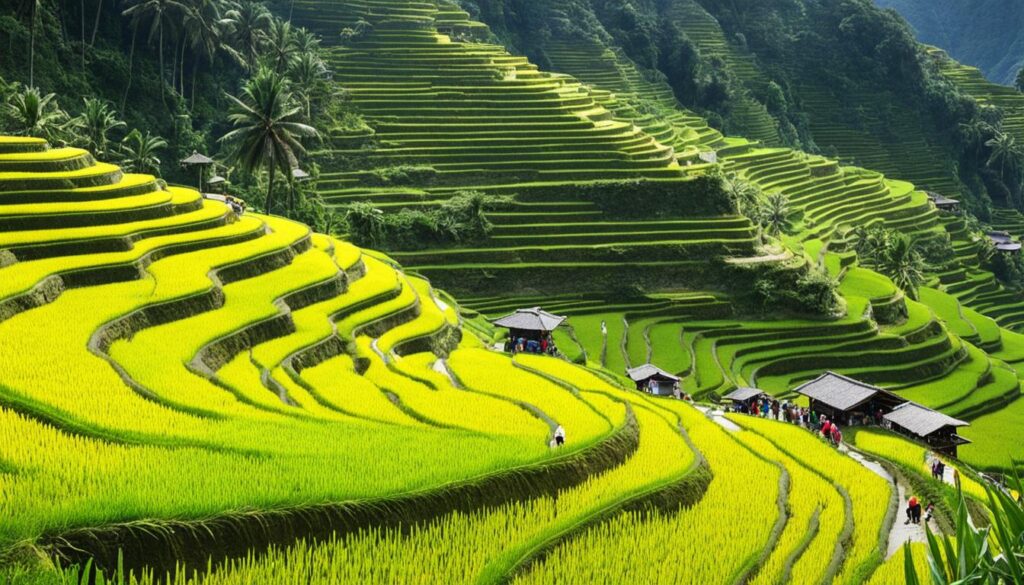Are you a passionate traveler who values sustainable practices and responsible tourism? Look no further than Northern Vietnam. This region offers a myriad of eco-friendly destinations, accommodations, and activities that promote environmentally conscious travel. By choosing green holidays in Northern Vietnam, you can support local communities, preserve the region’s natural and cultural heritage, and have a unique and enriching experience. Join us on this eco-tourism journey through Northern Vietnam and be part of the responsible tourism movement.
Exploring Northern Vietnam’s Eco-tourism Destinations
If you’re looking for a sustainable travel experience, Northern Vietnam offers an array of stunning eco-tourism destinations. Ha Giang province, known for its incredible limestone mountains and indigenous hill tribes, is an ideal spot for nature lovers. Ba Be National Park, with its awe-inspiring waterfalls and lakes, is a perfect destination for hiking and kayaking enthusiasts. Meanwhile, Sapa, with its scenic rice terraces and cultural diversity, offers an immersive cultural experience.
What sets these destinations apart is their commitment to sustainable practices. From eco-lodges that use renewable energy to community-based tourism initiatives that prioritize local economic development, these destinations are ushering in a new era of responsible tourism.
Plan your itinerary thoughtfully and visit these stunning eco-tourism destinations to experience the best of Northern Vietnam’s natural beauty and sustainable travel.
Choosing Eco-friendly Accommodations
When planning your sustainable trip to Northern Vietnam, choosing eco-friendly accommodations is a crucial step. Look for hotels, resorts, and homestays that prioritize energy efficiency, waste reduction, and responsible tourism practices.
| Benefits of Eco-friendly Accommodations |
|---|
| Reduces Environmental Impact: Eco-friendly accommodations use renewable resources, reduce waste, and minimize their carbon footprint. |
| Saves Resources: Energy-efficient accommodations reduce energy and water usage, saving resources and reducing costs. |
| Promotes Sustainable Tourism: Choosing eco-friendly accommodations supports the local economy, preserves natural resources, and encourages sustainable tourism practices. |
Some popular eco-friendly accommodations in Northern Vietnam include the Topas Ecolodge in Sapa, the Victoria Hotel in Hanoi, and the Eco Palms House in Ha Giang. These accommodations implement sustainable practices such as solar energy, waste reduction, and community involvement.
When researching accommodations, look for eco-certifications such as EarthCheck, Green Globe, or LEED to ensure that the accommodation meets sustainable standards. You can also ask the hotel about their sustainability practices and policies to ensure they align with your own values.
By choosing eco-friendly accommodations, you can enjoy a comfortable stay while minimizing your environmental impact and supporting sustainable tourism practices.
Engaging in Eco-tourism Activities
When visiting Northern Vietnam, engaging in eco-tourism activities is a must. Not only do these activities offer unforgettable experiences, but they also support sustainable travel practices and local communities.
Outdoor adventures are aplenty in Northern Vietnam. Take a trek through the rice fields of Sapa or explore the waterfalls of Ba Be National Park. For those seeking cultural experiences, immerse yourself in the local H’mong culture through homestays or visit the historic Hanoi Old Quarter.
Community-based initiatives also provide opportunities to give back to the local communities. Take part in a clean-up drive or visit conservation areas to support environmental awareness. These initiatives ensure that tourism has a positive impact on the region, preserving its natural and cultural heritage.
“Eco-tourism activities connect you with nature, culture, and community. You get to experience the beauty of Northern Vietnam while also supporting sustainable travel practices.”
Responsible Tour Operators in Northern Vietnam
Choosing the right tour operator can make a big difference in creating a sustainable travel experience in Northern Vietnam. Responsible tour operators prioritize sustainable practices and cultural preservation, while ensuring positive impacts on the local communities. These operators are committed to providing authentic experiences while minimizing the environmental footprint.
When selecting a tour operator, look for those that have sustainability policies, use eco-friendly transportation, and prioritize carbon offsets. They should also support locally owned businesses and work with local communities to promote responsible tourism practices.
Below is a list of responsible tour operators in Northern Vietnam:
| Tour Operator | Location | Contact |
|---|---|---|
| Sapa O’Chau | Sapa | info@sapaochau.org |
| Eco-Tour Vietnam | Hanoi | ecotourvn@gmail.com |
| Footprint Travel | Hanoi | hello@footprint.vn |
Eco-friendly tours are a great way to explore Northern Vietnam while supporting sustainable travel practices. Choose a responsible tour operator for an authentic and environmentally conscious experience.
Exploring Eco-friendly Attractions
When it comes to sustainable travel in Northern Vietnam, there are plenty of eco-friendly attractions for you to discover. From natural wonders to cultural sites, these destinations promote responsible tourism practices and create positive impacts on the environment and local communities.
One must-visit spot is the Pu Luong Nature Reserve, where you can experience the beauty of rice terraces, limestone cliffs, and ethnic villages. The reserve also provides guided treks, cycling tours, and homestay accommodations that directly support the livelihoods of local people. Another eco-friendly attraction is the Bai Tu Long National Park, which features pristine beaches, limestone islands, and diverse marine life. The park implements strict conservation measures to preserve its natural resources and encourages visitors to respect the environment.
If you’re interested in cultural experiences, you can explore the ancient town of Hoi An, a UNESCO World Heritage site. The town has developed sustainable tourism practices, such as using eco-friendly transportation and reducing plastic waste. You can learn about traditional crafts, taste local cuisine, and admire historic architecture while supporting the local economy.
“We believe eco-tourism is the key to preserving the cultural heritage and natural beauty of Vietnam.”
As you plan your sustainable travel itinerary, be sure to include these eco-friendly attractions in Northern Vietnam. Remember to practice environmental awareness and responsible behavior during your visits to contribute to the preservation of these unique destinations.
Impact of Eco-friendly Tourism in Northern Vietnam
Eco-friendly tourism in Northern Vietnam has a significant positive impact on the environment, communities, and local economies. Sustainable travel practices help conserve natural resources, protect biodiversity, and reduce carbon footprints.
By supporting eco-conscious initiatives, travelers encourage responsible tourism practices, reduce negative impacts on local communities, and boost economic growth.
Moreover, responsible tourism can help preserve cultural traditions and promote intercultural understanding. It allows visitors to experience the local lifestyle while respecting cultural diversity.
Therefore, choosing eco-friendly tourism in Northern Vietnam and being a responsible traveler can help create a more sustainable future for the region and the planet.
Green Initiatives and Policies in Northern Vietnam
If you’re looking for eco-friendly tourism destinations, Northern Vietnam has plenty of options to offer. Governments, businesses, and local communities have joined hands to promote sustainable practices, implement green initiatives and policies.
One example of a government initiative is the Vietnam National Administration of Tourism’s “Programme on Green Growth in Tourism Activities,” launched in 2017. The program aims to promote sustainable tourism by encouraging tourism stakeholders to adopt eco-friendly practices and utilize energy-efficient technologies.
Community-led initiatives also contribute to sustainable tourism in Northern Vietnam. One such project is the “Save Son Tra” initiative, which aims to conserve Son Tra Nature Reserve by banning construction of any new hotels or resorts in the area.
The Vietnamese tourism industry has also been encouraged to obtain eco-certifications, such as the Green Lotus, an award presented to tourism businesses that follow sustainable practices. Dolce by Wyndham Hanoi Golden Lake is known for its sustainable practices, such as rainwater harvesting and recycling.
Comparison Table: Eco-Friendly Certifications among Lodging Facilities in Northern Vietnam
| Lodging Facility | Green Lotus |
|---|---|
| InterContinental Hanoi Westlake | Gold Certification (2019) |
| Sofitel Legend Metropole Hanoi | Gold Certification (2018) |
| Lapis Hotel Hanoi | Silver Certification (2018) |
| Vietnam Paradise Travel | Green Lotus Standard (2016) |
Eco-tourism is gaining momentum in Northern Vietnam. By working together towards sustainable tourism practices, we can ensure that tourism continues to benefit both the local communities and the environment.
Tips for an Eco-friendly Trip to Northern Vietnam
Going on an eco-friendly trip to Northern Vietnam can be a memorable experience that respects the environment and local communities. Here are some tips to make your travel sustainable and responsible:
Pack Lightly and Sustainably
To reduce your carbon footprint, pack light and bring only the necessary items. Use reusable bags, water bottles, and utensils to minimize waste. Bring eco-friendly toiletries and avoid single-use plastics.
Choose Eco-friendly Accommodations
Book eco-friendly accommodations that prioritize sustainability, energy efficiency, and responsible tourism practices. Stay in eco-conscious hotels, resorts, or choose homestays that support local communities.
Respect Cultural Traditions
Learn about the local customs and traditions before you arrive. Dress appropriately and be respectful of religious and cultural beliefs. Support local artisans and avoid buying souvenirs made from endangered species or illegal logging.
Practice Responsible Tourism
Respect the environment and wildlife by avoiding activities that harm them. Avoid littering, and properly dispose of waste. Follow local regulations and support community-led initiatives that promote responsible tourism.
Support Local Businesses
Eat locally sourced food and buy locally-made products to support the local economy. Choose restaurants, shops, and tour operators that prioritize sustainability and support the community.
By following these tips, you can enjoy an eco-friendly trip to Northern Vietnam while minimizing your environmental impact and supporting sustainable travel.
Off the Beaten Path Eco-tourism Experiences
While popular eco-tourism destinations in Northern Vietnam offer fascinating experiences, there are lesser-known sites where you can find unique eco-tourism experiences. Here are some off the beaten path activities that will help you discover the hidden gems in Northern Vietnam:
1. Conquering Quan Ba Heaven Gate
Quan Ba Heaven Gate, or “The Gate to the Sky,” is located in Ha Giang province and offers stunning panoramic views of the Can Ty valley and vast limestone peaks. The winding road to the top can be challenging but rewarding, especially for experienced hikers. The breathtaking scenery from the top will make your journey worthwhile.
2. Exploring Cao Son Ecological Village
Cao Son Ecological Village is a community-based tourism site situated in the Muong Khuong district of Lao Cai province. It offers an authentic opportunity to experience the culture and lifestyle of the Tay ethnic minority people. Visitors can participate in local activities such as farming, weaving, and cooking while staying in traditional stilt houses.
3. Visiting Trang An Scenic Landscape Complex
Trang An Scenic Landscape Complex is a UNESCO World Heritage site located in Ninh Binh province. It comprises karst peaks, rivers, valleys, and caves, providing a diverse and picturesque landscape. Activities in this eco-friendly attraction include boat trips, cave exploration, and bike rides.
4. Learning Traditional Crafts at Bat Trang Ceramics Village
Bat Trang Ceramics Village is a renowned village located on the banks of the Red River in Hanoi. The village specializes in crafting ceramics and pottery using traditional techniques that have been passed down through generations. Visitors can participate in workshops to learn various skills such as molding, shaping, ceramics decoration, and glazing.
“Traveling off the beaten path allows you to discover hidden gems and support local communities while minimizing the negative impact on the environment. It also provides authentic and memorable travel experiences.”
With these suggestions, you can step off the tourist trail and discover the beauty of Northern Vietnam’s hidden eco-tourism gems.
Enhancing Sustainable Practices in Northern Vietnam
Preserving the natural and cultural heritage of Northern Vietnam requires collective responsibility. Locals, businesses, and tourists can play their part in enhancing sustainable practices to protect the environment, support local communities, and encourage eco-friendly tourism. Here are some suggestions for sustainable practices:
- Reduce plastic waste: Bring reusable water bottles and bags to minimize the use of plastic. Avoid single-use plastic items and properly dispose of waste.
- Conserve energy: Turn off lights, air conditioners and other electronics when not in use. Support accommodations that use renewable energy sources.
- Respect cultural practices: Learn about and respect local cultures and traditions. Dress appropriately and follow etiquette guidelines when visiting cultural sites.
- Support local communities: Choose locally owned accommodations, restaurants, and tour operators to support the local economy. Take part in community-based tourism initiatives that benefit the community.
- Practice responsible tourism: Choose eco-friendly activities and tours that don’t harm the environment or exploit animals. Follow guidelines for responsible wildlife watching.
- Participate in conservation efforts: Join eco-friendly initiatives to protect the environment. Support conservation areas and help with waste clean-up initiatives.
By adopting these practices, you can contribute to the preservation of Northern Vietnam’s natural and cultural heritage while enjoying an eco-friendly trip. Let’s work together to support sustainable practices and enhance the region’s eco-tourism initiatives.
Conclusion
Congratulations on learning about eco-friendly tourism in Northern Vietnam and the importance of sustainable travel. By choosing to support eco-tourism destinations, eco-friendly accommodations, responsible tour operators, and engaging in eco-tourism activities, you are contributing to the region’s environmental conservation and cultural preservation.
Remember to pack sustainably, minimize waste, support local businesses, and respect cultural traditions during your trip. By doing so, you are making a positive impact on the region and supporting its eco-friendly tourism initiatives.
Together, we can enhance sustainable practices in Northern Vietnam and create a more environmentally conscious future. Thank you for being a responsible traveler and supporting eco-friendly tourism in Northern Vietnam.

















































